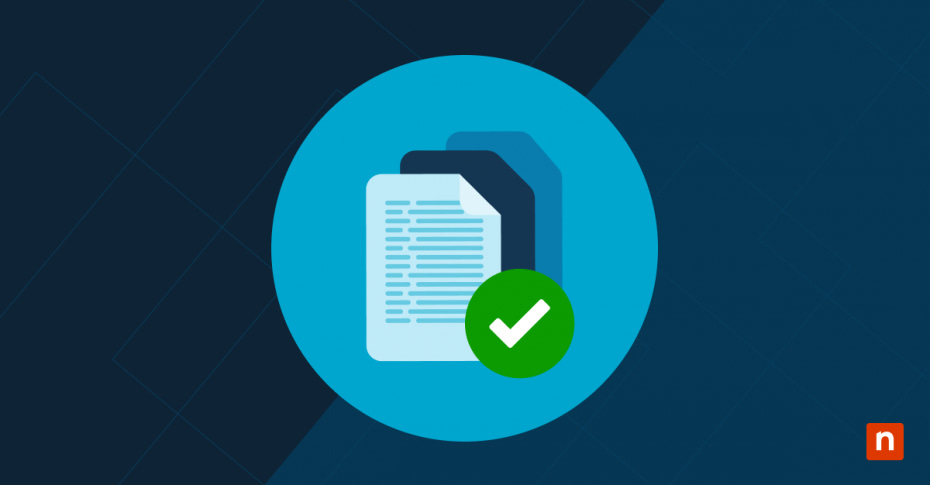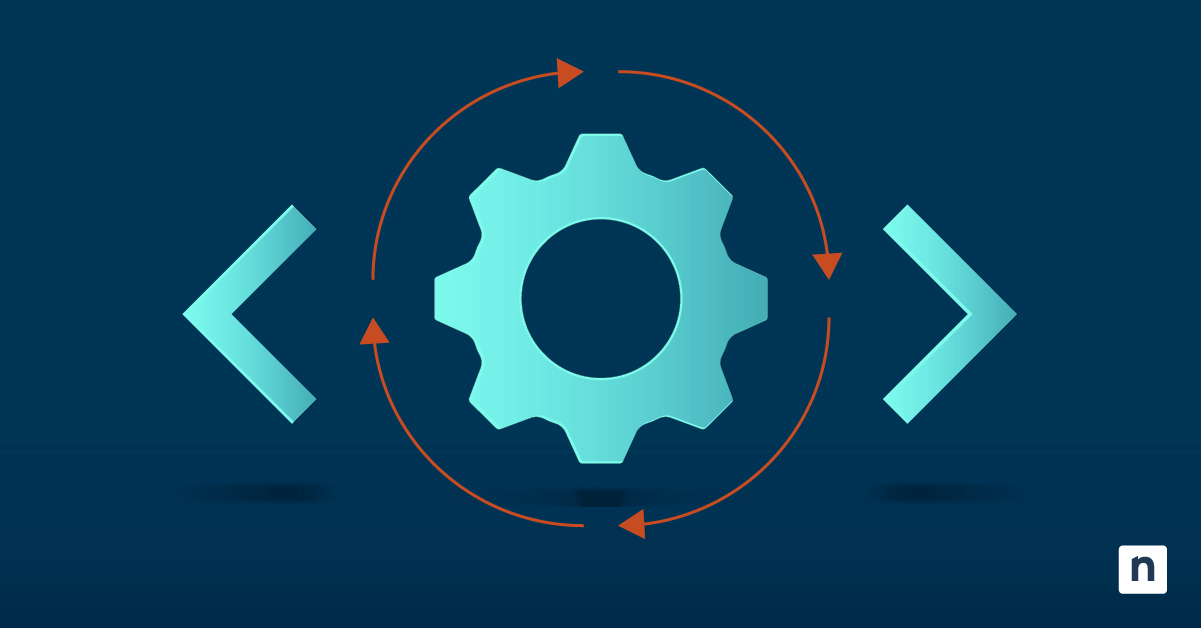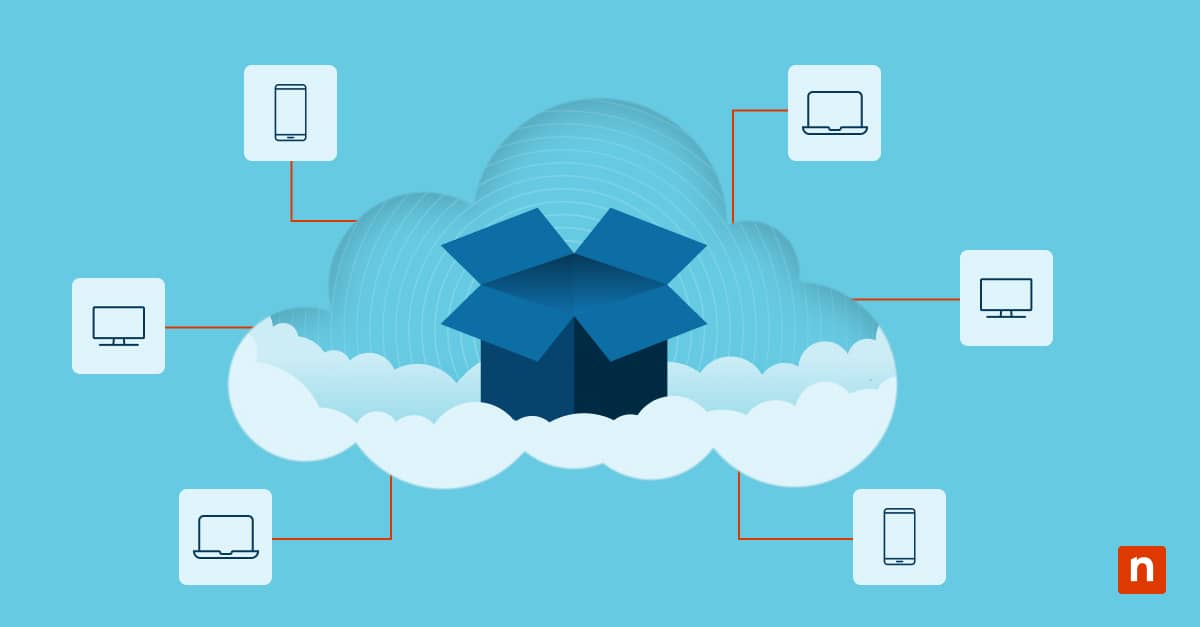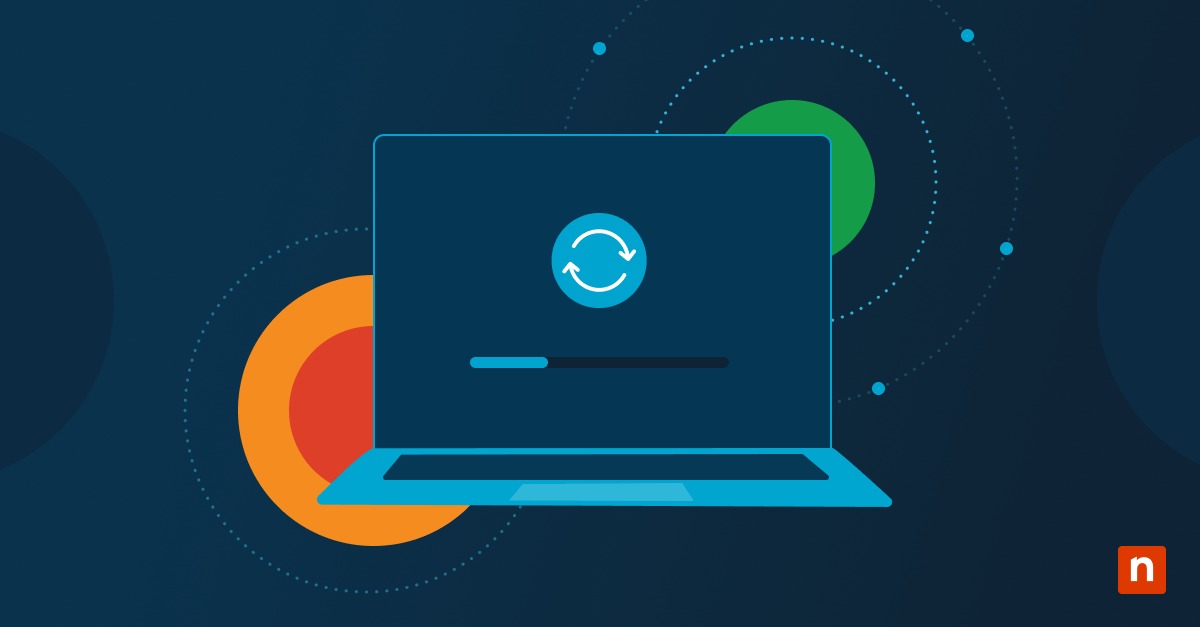Every cybersecurity professional knows the challenge of managing vulnerabilities across an ever-expanding digital infrastructure. Manual vulnerability management simply cannot keep pace with the thousands of new threats and security gaps discovered each year, leaving organizations exposed to significant risks.
Automated vulnerability management transforms this reactive struggle into a proactive, systematic approach that continuously identifies, prioritizes, and addresses security weaknesses before attackers can exploit them. In this guide, we’ll explore how automation streamlines security operations, reduces manual overhead, and minimizes security risks through intelligent detection, prioritization, and remediation workflows.
Whether you’re managing a small business network or enterprise infrastructure, understanding automated vulnerability management is essential for maintaining robust cybersecurity defenses in this year and beyond.
What is vulnerability management?
Vulnerability management is the process of identifying, evaluating, prioritizing, and addressing security weaknesses in an organization’s IT infrastructure. This continuous cycle encompasses everything from discovering unpatched software and misconfigured systems to addressing zero-day vulnerabilities and compliance gaps that could expose sensitive data or disrupt business operations.
The four core stages of vulnerability management
The vulnerability lifecycle consists of four essential stages that work together to maintain organizational security posture. Identification involves discovering vulnerabilities through automated scanning tools, threat intelligence feeds, and security assessments that examine systems, applications, and network components for known weaknesses. Evaluation follows, where security teams assess the severity, exploitability, and potential business impact of discovered vulnerabilities using standardized scoring systems like CVSS (Common Vulnerability Scoring System).
Prioritization represents the critical decision-making phase where organizations determine which vulnerabilities require immediate attention based on risk factors including asset criticality, threat landscape, and available exploit code. Finally, remediation encompasses the actual fixing process through patches, configuration changes, compensating controls, or system isolation depending on the specific vulnerability and organizational constraints.
Manual vs automated vulnerability management approaches
Traditional manual vulnerability management relies heavily on human intervention at each stage of the process. Security analysts manually configure scans, review results, research individual vulnerabilities, and coordinate remediation efforts with IT teams. While this approach provides detailed control and context-aware decision making, it becomes overwhelmingly time-consuming as infrastructure scales and vulnerability volumes increase.
Manual processes typically struggle with consistency, as different analysts may prioritize vulnerabilities differently or miss critical findings in large datasets. The time lag between vulnerability discovery and remediation often stretches from weeks to months, creating extended exposure windows that attackers can exploit.
Automated vulnerability management leverages technology to streamline these processes through continuous scanning, intelligent prioritization algorithms, and integrated remediation workflows. Automation doesn’t eliminate human oversight but instead focuses human expertise on high-value activities like strategic decision-making, exception handling, and complex remediation scenarios that require specialized knowledge.
Why automate vulnerability management? Benefits and business case
Organizations face mounting pressure to accelerate vulnerability remediation while managing increasingly complex IT environments with limited security resources. Automation addresses these challenges by transforming vulnerability management from a reactive, labor-intensive process into a proactive, efficient security operation.
Addressing the challenges of manual vulnerability handling
Manual vulnerability management creates several operational bottlenecks that automation directly addresses. Scale limitations prevent security teams from adequately covering large, distributed infrastructure where thousands of systems require regular assessment. Human analysts can realistically evaluate only a fraction of the vulnerabilities discovered in enterprise environments, leading to critical security gaps.
Inconsistent prioritization occurs when different team members apply varying criteria to vulnerability assessment, resulting in misallocated resources and delayed remediation of critical threats. Alert fatigue overwhelms analysts with excessive low-priority findings, reducing their effectiveness at identifying truly dangerous vulnerabilities that require immediate attention.
Slow response times characterize manual processes where vulnerability discovery, analysis, and remediation coordination can take weeks or months. During this extended timeframe, attackers may develop and deploy exploits targeting the identified weaknesses, particularly for high-profile vulnerabilities that receive public attention.
Quantifiable benefits of automation
Automated vulnerability management delivers measurable improvements across multiple operational metrics. Efficiency gains typically reduce the time from vulnerability discovery to initial assessment from days to hours, enabling security teams to focus on strategic initiatives rather than routine administrative tasks. Organizations commonly report 60-80% reductions in manual effort required for vulnerability processing and tracking.
Consistency improvements ensure that all vulnerabilities receive standardized evaluation using objective criteria, eliminating human bias and ensuring that critical threats receive appropriate priority regardless of which team member discovers them. Automated systems apply consistent scoring methodologies and prioritization algorithms across all findings.
Real-time response becomes possible when automated systems continuously monitor for new vulnerabilities and immediately initiate assessment and notification workflows. This rapid response dramatically reduces the window of opportunity for attackers to exploit newly disclosed vulnerabilities.
Scalability enhancements enable organizations to maintain comprehensive vulnerability management coverage as their infrastructure grows, without proportionally increasing security staff. Automated systems can assess thousands of systems simultaneously and process vulnerability feeds containing hundreds of new threats daily.
Compliance and risk reduction advantages
Regulatory frameworks increasingly require organizations to demonstrate systematic vulnerability management processes with documented timelines and remediation tracking. Automated systems naturally generate the audit trails and metrics needed for compliance reporting while ensuring that organizations meet mandatory remediation deadlines for critical vulnerabilities.
Risk reduction occurs through faster threat identification and remediation, reducing the overall exposure window during which attackers could exploit discovered vulnerabilities. Automated prioritization helps organizations focus limited resources on the most dangerous threats first, optimizing the security return on investment.
Key components of an automated vulnerability management system
Effective automated vulnerability management requires several integrated components working together to create a comprehensive security assessment and remediation pipeline. Each component serves a specific function while contributing to the overall goal of maintaining organizational security posture.
Automated scanning and asset discovery
Modern vulnerability scanners form the foundation of automated systems by continuously discovering and assessing network assets, applications, and cloud resources. Network discovery tools automatically identify active systems, open ports, and running services across corporate networks, cloud environments, and remote locations. These tools maintain dynamic asset inventories that update as infrastructure changes occur.
Vulnerability detection engines compare discovered assets against comprehensive vulnerability databases containing hundreds of thousands of known security weaknesses. Advanced scanners perform both authenticated and unauthenticated assessments, examining system configurations, installed software versions, and security settings to identify potential attack vectors.
Cloud security scanning addresses the unique challenges of dynamic cloud infrastructure where resources are created and destroyed frequently. Automated scanners integrate with cloud provider APIs to continuously assess new instances, containers, and serverless functions as they come online, ensuring that security coverage keeps pace with infrastructure changes.
Threat intelligence integration and contextualization
Automated systems enhance vulnerability prioritization by incorporating real-time threat intelligence that provides context about active exploitation campaigns, available exploit code, and attacker targeting preferences. Threat feeds pull data from commercial threat intelligence providers, government sources, and open-source intelligence to enrich vulnerability findings with current threat landscape information.
Exploit availability tracking monitors sources like Metasploit, GitHub, and underground forums to identify when proof-of-concept code or working exploits become available for specific vulnerabilities. This information dramatically increases priority scores for vulnerabilities with active exploitation tools.
Attack pattern analysis examines historical attack data and current campaign intelligence to identify vulnerabilities commonly targeted by specific threat actor groups or attack techniques. Organizations can adjust their prioritization algorithms based on the threat actors most likely to target their industry or geographic region.
Intelligent prioritization and risk scoring
Automated prioritization engines process multiple data sources to generate risk scores that guide remediation decisions. Asset criticality weighting considers the business importance of affected systems, with vulnerabilities on critical infrastructure receiving higher priority scores than those on development or test systems.
Environmental context analysis examines factors like network segmentation, access controls, and compensating security measures to adjust vulnerability scores based on actual exploitability within the specific environment. A vulnerability on an internet-facing system receives higher priority than the same vulnerability on an isolated internal system.
Business impact assessment incorporates data about system functions, regulatory requirements, and operational dependencies to prioritize vulnerabilities based on potential business consequences rather than purely technical severity ratings.
Automated remediation workflows and integration
Advanced automation systems can initiate remediation actions automatically for certain types of vulnerabilities, significantly reducing the time between discovery and fix implementation. Patch management integration enables automated deployment of security updates for approved vulnerability types, particularly operating system and major application patches with established testing procedures.
Configuration management automation can correct security misconfigurations immediately upon discovery, such as enabling security features, adjusting access controls, or updating security baselines through integration with tools like Ansible, Puppet, or PowerShell DSC.
Ticketing system integration automatically creates work orders for manual remediation tasks, assigns them to appropriate teams based on system ownership, and tracks progress through completion. These integrations ensure that vulnerabilities requiring human intervention don’t fall through administrative cracks.
How automation works: from detection to remediation
Understanding the automated vulnerability management workflow helps organizations design effective systems that balance speed, accuracy, and operational efficiency. The process flows through distinct phases, each building on the previous stage to create a comprehensive security assessment and response pipeline.
Continuous discovery and assessment workflow
Automated vulnerability management begins with continuous asset discovery that maintains real-time visibility into organizational infrastructure:
- Network scanning tools scan IP ranges, query cloud provider APIs, and integrate with configuration management databases
- Real-time assessment ensures new systems receive immediate security evaluation rather than waiting for scheduled scans
- Hybrid scanning approach combines:
- Daily differential scans to identify changes since previous assessment
- Weekly/monthly comprehensive scans for thorough baseline evaluation
- Event-driven scans triggered by new deployments or threat intelligence updates
Vulnerability correlation and deduplication works to eliminate false positives and redundant findings, with machine learning algorithms improving accuracy over time based on analyst feedback.
Real-time prioritization and alert generation
Once vulnerabilities are identified, automated systems immediately begin prioritization using multi-factor risk scoring that considers:
- Technical severity ratings (CVSS scores)
- Current threat intelligence and exploit availability
- Asset criticality and business impact
- Environmental factors and compensating controls
Dynamic priority adjustment continuously updates scores as new information becomes available:
- Active exploitation campaigns immediately elevate vulnerability priority
- Threat intelligence feeds trigger urgent notifications for affected systems
- Intelligent alerting routes notifications based on severity:
- Critical vulnerabilities: Immediate alerts to security leadership
- Lower-priority findings: Daily or weekly summary reports
Integration with patch management and SIEM platforms
Modern vulnerability management automation integrates with existing IT infrastructure to simplify security.
Patch management integration:
- Cross-references vulnerabilities with available patches
- Automatically schedules deployment for approved updates
- Creates approval workflows for critical system patches
- Popular platforms: Microsoft WSUS/SCCM, Red Hat Satellite, Tanium, BigFix
SIEM and SOAR integration:
- Enriches vulnerability data with log analysis
- Monitors for active exploitation attempts
- Initiates automated containment procedures
- Leading platforms: Splunk Phantom, Palo Alto Cortex XSOAR, Azure Sentinel
API integration and custom automation
Organizations can develop custom workflows using a variety of methods — and for many use cases.
Scripting and APIs:
- PowerShell scripts for Windows-specific remediation
- Python scripts for complex data processing
- REST APIs for real-time data sharing between platforms
Common use cases:
- Automatically update asset management databases with findings
- Trigger incident response workflows for critical discoveries
- Generate custom executive dashboards and compliance reports
- Create tailored communication workflows matching operational procedures
Tools and platforms for vulnerability management automation
Selecting appropriate tools for automated vulnerability management requires careful evaluation of organizational needs, existing infrastructure, and your long-term security strategy. The market offers diverse options ranging from comprehensive enterprise platforms to specialized open-source solutions.
Commercial vulnerability management platforms
Tenable.io
Tenable.io provides cloud-based vulnerability management with extensive automation features including continuous asset discovery, risk-based prioritization, and integration with over 40 third-party security tools. The platform’s predictive prioritization uses machine learning to identify vulnerabilities most likely to be exploited, helping organizations focus remediation efforts effectively.
Qualys VMDR
Qualys VMDR (Vulnerability Management, Detection, and Response) combines traditional vulnerability scanning with threat detection and automated response workflows. The platform’s continuous monitoring approach eliminates traditional scan windows, providing real-time visibility into security posture changes.
Rapid7 InsightVM
Rapid7 InsightVM focuses on risk-based vulnerability management with advanced analytics and automation workflows. The platform’s live dashboards provide real-time visibility into vulnerability trends, remediation progress, and security metrics that support executive decision-making.
Open-source vulnerability management solutions
OpenVAS
OpenVAS represents the most mature open-source vulnerability scanner, offering comprehensive security assessment capabilities without commercial licensing costs. The platform includes a full vulnerability management framework with web-based management interfaces, automated scheduling, and customizable reporting features.
Wazuh
Wazuh combines vulnerability detection with host-based intrusion detection, providing integrated security monitoring that goes beyond traditional vulnerability scanning. The platform’s automation includes real-time alerting, automated response actions, and integration with threat intelligence feeds.
Specialized automation and orchestration tools
Security orchestration platforms like Phantom (Splunk SOAR), Demisto (Cortex XSOAR), or Azure Sentinel provide advanced automation workflows that integrate vulnerability management with broader security operations. These platforms enable organizations to create complex response workflows that automatically correlate vulnerability data with threat intelligence, incident response procedures, and remediation actions.
Orchestration tools excel at handling complex decision trees, multi-system integrations, and workflow automation that requires sophisticated logic beyond basic vulnerability assessment and reporting.
Tool selection criteria and evaluation framework
Effective tool selection involves evaluating your requirements and the solution’s features. Scalability considerations include the number of assets requiring assessment, geographic distribution of infrastructure, and expected growth over the next 3-5 years. Some solutions are perfect for small to medium environments while others are designed specifically for enterprise-scale deployments.
Integration requirements determine which tools can effectively connect with existing security infrastructure including SIEM platforms, patch management systems, and RMM tools. Organizations should prioritize solutions with robust APIs and pre-built integrations for their current technology stack.
Automation depth varies significantly between solutions, with some offering basic automated vulnerability scanning and reporting while others provide sophisticated machine learning-based prioritization and automated remediation workflows. Match automation features to your organization’s security maturity level and operational requirements.
Total cost of ownership includes licensing fees, infrastructure requirements, training costs, and ongoing maintenance. Open-source solutions may have lower licensing costs but require significant internal expertise, while commercial platforms offer support and professional services at higher overall cost.
Best practices for implementing automated vulnerability management
Successful implementation of automated vulnerability management demands careful planning, phased deployment, and ongoing optimization to ensure that automation enhances rather than complicates security operations. Organizations should approach implementation systematically to maximize benefits while minimizing operational disruption.
Asset inventory and discovery foundation
Effective automated vulnerability management begins with comprehensive asset discovery and inventory management that provides complete visibility into organizational infrastructure.
- Implement network discovery tools that automatically identify systems, applications, and cloud resources across all organizational locations and environments.
- Maintain accurate asset classification that includes system criticality, business function, data sensitivity, and ownership information. This metadata enables automated systems to apply appropriate security policies and prioritization logic based on business context rather than purely technical factors.
Dynamic inventory maintenance ensures that asset databases remain current as infrastructure changes occur.
- Integrate discovery tools with cloud provider APIs, configuration management systems, and network monitoring tools to automatically update inventory records when systems are added, modified, or retired.
- Establish data quality processes that regularly validate asset information accuracy and completeness. Automated systems are only as effective as the underlying data quality, making inventory accuracy a critical foundation for successful vulnerability management automation.
Defining remediation timelines and SLAs
Risk-based remediation timelines provide clear expectations for addressing different vulnerability categories while balancing security with operations.
- Establish specific timeframes for different vulnerability severities (such as 24-48 hours for critical vulnerabilities with active exploitation, 7-14 days for high-severity findings, and 30-90 days for medium and low-priority issues).
- Consider environmental factors when setting timelines, recognizing that production systems may require longer remediation windows due to change control requirements while development environments can often be updated immediately.
- Document exception processes for cases where standard timelines cannot be met due to technical or business constraints.
Service level agreements (SLAs) should align remediation expectations with business risk tolerance and operational capabilities.
- Include metrics for vulnerability discovery-to-remediation timeframes, patch deployment success rates, and compliance with established timelines to measure program effectiveness.
- Create escalation procedures that automatically involve management when SLAs are at risk of being missed, ensuring that resource conflicts or technical challenges receive appropriate attention before they result in extended exposure windows.
Risk appetite alignment and compliance integration
Risk appetite should directly inform prioritization algorithms and remediation procedures. Organizations with lower risk tolerance might remediate medium-severity vulnerabilities more aggressively, while those with higher risk appetite might focus resources primarily on critical and high-severity findings.
- Document risk acceptance criteria for vulnerabilities that cannot be immediately remediated due to technical limitations, business requirements, or resource constraints. Automated systems should track these accepted risks and provide regular reviews to ensure that acceptance decisions remain valid as threat landscapes evolve.
Regulatory compliance requirements often mandate specific vulnerability management timelines and documentation standards that must be incorporated into automated workflows. Common compliance frameworks like PCI DSS, HIPAA, and SOX include specific requirements for vulnerability scanning frequency, remediation timelines, and audit trail maintenance.
- Integrate compliance reporting into automated systems to generate required documentation without manual effort. This includes vulnerability scan reports, remediation tracking, and risk acceptance documentation that auditors require to verify compliance with applicable regulations.
Continuous monitoring and feedback loops
Performance metrics and KPIs should measure both security effectiveness and operational efficiency to guide program optimization.
- Track metrics like mean time to detect (MTTD) and mean time to remediate (MTTR) vulnerabilities, along with patch deployment success rates and false positive percentages.
- Monitor trends in vulnerability discovery patterns to identify systemic security issues that require architectural or process improvements rather than individual vulnerability remediation. For example, consistent configuration management problems might indicate the need for better security baselines or automated configuration management tools.
Feedback and tuning processes enable continuous improvement of automated systems based on operational experience and changing threat landscapes.
- Regularly review prioritization algorithm effectiveness, adjust scoring criteria based on analyst feedback, and update automation workflows as organizational needs evolve.
- Establish regular review cycles that examine automation effectiveness, accuracy, and alignment with organizational objectives. Include feedback from security analysts, system administrators, and business stakeholders to ensure that automation supports rather than hinders effective security operations.
Use cases and real-world examples
Understanding how organizations successfully implement automated vulnerability management provides valuable insights for planning and optimizing your own program. These examples demonstrate practical applications across different industries and organizational structures.
Healthcare organization: managing medical device vulnerabilities
A large healthcare system can implement automated vulnerability management to address the unique challenges of securing medical devices and clinical systems. These organizations typically face difficulties managing vulnerabilities across thousands of networked medical devices, many of which cannot be patched using traditional methods due to regulatory requirements and vendor restrictions.
Implementation approach: The healthcare system deploys specialized medical device discovery tools that identify connected equipment through passive network monitoring and medical device management protocols. Automated vulnerability assessment then incorporates medical device-specific threat intelligence and FDA security bulletins to prioritize findings based on clinical risk rather than traditional CVSS scores.
The system generates compliance reports for joint commission requirements and automatically notifies clinical engineering teams when device security updates become available.
Results achieved: In this example, the organization reduced gap assessment time with continuous vulnerability management, identifying more security issues while decreasing the time from discovery to risk assessment from weeks to hours. Clinical operations continued uninterrupted while security posture improved significantly.
Financial services: regulatory compliance automation
A regional bank may choose comprehensive vulnerability management automation to meet stringent regulatory requirements while managing complex, distributed infrastructure. Such organizations need to demonstrate continuous vulnerability monitoring and rapid remediation capabilities to satisfy federal banking regulators and maintain customer trust.
Technical implementation: The bank deploys cloud-based vulnerability management with automated scanning across on-premises data centers, cloud environments, and remote branch locations. Integration with existing patch management automation systems enables deployment of security updates during approved maintenance windows.
Compliance automation generates regulatory reports automatically, including quarterly risk assessments, vulnerability remediation tracking, and exception documentation for findings that couldn’t be immediately addressed. The system provides audit trails showing compliance with mandated 30-day remediation timelines for critical vulnerabilities.
Results achieved: In this example, regulatory examination preparation time decreased from weeks to days, as all required documentation was automatically generated and maintained. The bank achieved almost complete compliance with remediation timelines while reducing security staff workload, allowing focus on strategic security initiatives rather than administrative tasks.
MSP: multi-client cybersecurity management
A managed service provider implements automated vulnerability management to efficiently secure dozens of client environments with varying security requirements and infrastructure configurations. The MSP needed standardized security processes that could scale across diverse client environments while providing detailed reporting for each organization.
Multi-tenant architecture: The automation platform provides isolated security assessment for each client while enabling centralized management and reporting. Automated systems apply client-specific security policies and compliance requirements while maintaining operational efficiency through standardized processes.
Client-specific automation includes customized vulnerability prioritization based on industry requirements, automated compliance reporting for various regulatory frameworks, and integration with client-specific patch management and ticketing systems.
Results achieved: In this example, the MSP increased client security coverage while reducing security assessment costs considerably. Client satisfaction improved due to more frequent security reporting and faster vulnerability remediation, leading to increased MSA renewals and business growth.
Common vulnerability management pitfalls and how to avoid them
Organizations implementing automated vulnerability management often encounter predictable challenges that can undermine program effectiveness. Understanding these common pitfalls and their solutions helps ensure successful automation deployment and ongoing operation.
Overlooking false positives and alert fatigue
False positive management represents one of the most significant challenges in automated vulnerability management. Poorly tuned systems generate excessive false alerts that overwhelm security teams and reduce confidence in automated findings. This problem typically occurs when organizations deploy vulnerability scanners without proper configuration for their specific environment or fail to establish validation processes for automated discoveries.
Effective solutions require systematic false positive reduction through careful scanner configuration, regular tuning based on analyst feedback, and implementation of validation workflows. Establish baseline scans for known-good systems and use these baselines to identify genuine changes that require investigation.
You can also implement feedback loops where security analysts can mark false positives, enabling machine learning algorithms to improve accuracy over time. Create exception processes for legitimate findings that cannot be remediated, ensuring that these known issues don’t continue generating alerts indefinitely.
Inadequate integration with existing security tools
Integration failures severely limit automation effectiveness. Organizations often underestimate the complexity of connecting vulnerability data with patch management, incident response, and security monitoring systems, resulting in fragmented security operations that fail to leverage automation benefits fully.
Technical integration challenges include incompatible data formats between different security tools, authentication and authorization complications in complex enterprise environments, and API limitations that prevent real-time data sharing. Many organizations discover integration requirements after deploying vulnerability management tools, making retrofitting more complex and expensive than planning integration from the beginning.
Prioritize solutions with proven integration track records, and plan integration projects with adequate time and resources, recognizing that effective automation often requires custom development work to connect disparate systems and normalize data formats.
Poor vulnerability prioritization and resource allocation
Ineffective prioritization occurs when automated systems use inadequate criteria for vulnerability assessment, leading to misallocated resources and delayed remediation of genuine threats. Many organizations rely solely on CVSS scores without considering environmental factors, asset criticality, or threat intelligence, resulting in prioritization decisions that don’t align with actual business risk.
Optimization requires sophisticated prioritization algorithms that incorporate multiple risk factors including asset criticality, threat intelligence, exploitability assessments, and business impact analysis. You should regularly review and adjust prioritization criteria based on operational experience and changing threat landscapes.
Establish clear boundaries between automated and manual processes, ensuring that routine tasks are fully automated while complex decisions receive appropriate human oversight.
Insufficient change management and user adoption
Change management mishaps can undermine automation projects when organizations focus primarily on technical implementation while neglecting human and process changes. Security teams may resist automation as well, if they perceive it as threatening their roles or if they lack training on new tools and processes.
Insufficient training on automated systems, unclear role definitions in automated workflows, and resistance to changing established security procedures all introduce challenges to change. Organizations often discover that successful automation requires significant process reengineering rather than simply adding new tools to existing workflows.
Success strategies require comprehensive change management planning that addresses people, processes, and technology aspects of automation implementation. Involve security teams in automation planning and design decisions, ensuring that automation enhances rather than replaces human expertise.
Provide extensive training and support during automation deployment, including hands-on practice with new tools and workflows. Clearly communicate how automation will change job responsibilities and career development opportunities, helping security professionals understand their evolving roles in automated environments.
Frequently Asked Questions (FAQ)
Is automated vulnerability management suitable for small businesses?
Automated vulnerability management can provide significant benefits for small businesses, but implementation approaches should match organizational resources and technical expertise. Small businesses often benefit most from cloud-based vulnerability management services that require minimal infrastructure investment and provide professional support for configuration and optimization.
Cost-effective approaches for small businesses include MSPs and managed security service providers (MSSPs) that offer vulnerability management as part of comprehensive security packages. These services provide enterprise-grade automation and expertise at a fraction of the cost of building internal programs. Many small businesses find that outsourced vulnerability management provides better security outcomes than attempting to manage complex automation systems with limited internal resources.
How does automation affect compliance audits and reporting?
Automated vulnerability management significantly improves compliance audit outcomes by providing comprehensive documentation, consistent processes, and real-time reporting that auditors require to verify regulatory compliance. Most regulatory frameworks include specific requirements for vulnerability management that automated systems can address more effectively than manual processes.
Audit trail automation generates detailed records of vulnerability discovery, assessment, prioritization, and remediation activities that provide auditors with complete visibility into security processes. Automated systems maintain timestamped logs of all activities, creating objective evidence of compliance with regulatory requirements and organizational policies.
Can automation replace human decision-making entirely?
Automated vulnerability management enhances — but does not replace — human expertise, with successful programs balancing automation efficiency with human judgment for complex security decisions. While automation excels at routine tasks like vulnerability discovery, data correlation, and basic prioritization, human expertise remains essential for strategic decisions.
Humans still outshine machines when it comes to strategic risk assessments that consider business context, vulnerability research and analysis, remediation planning for unique environments, and decision-making about risk acceptance and business impact. Experienced security professionals provide crucial context and judgment that automated systems cannot replicate.
What ROI can organizations expect from automation?
Return on investment from automated vulnerability management typically includes both quantifiable cost savings and qualitative security improvements that contribute to overall business value. Most organizations see positive ROI within 12-18 months of implementation, with benefits increasing over time as systems are optimized and teams become more proficient with automated workflows.
Security improvement benefits include faster threat identification and response, more comprehensive security coverage across organizational infrastructure, and improved compliance with security policies and regulatory requirements. These improvements reduce business risk and potential costs from security incidents.
Calculations should include implementation costs, ongoing operational expenses, and training requirements alongside measurable benefits. ROI calculations should also consider risk reduction value and potential cost avoidance from preventing security incidents through improved vulnerability management processes.
In summary
Success with automated vulnerability management requires careful planning, phased implementation, and ongoing optimization that balances automation benefits with human expertise. Organizations must invest in proper tool selection, integration planning, and change management to realize the full potential of automation while avoiding common pitfalls that can undermine program effectiveness.
Whether you’re managing a small business network or enterprise infrastructure, the principles and practices outlined in this guide provide a roadmap for implementing effective automated vulnerability management that enhances security while reducing operational complexity. Start with a clear assessment of your current capabilities, establish realistic goals for automation implementation, and build your program systematically to achieve sustainable security improvements that support long-term business success.








